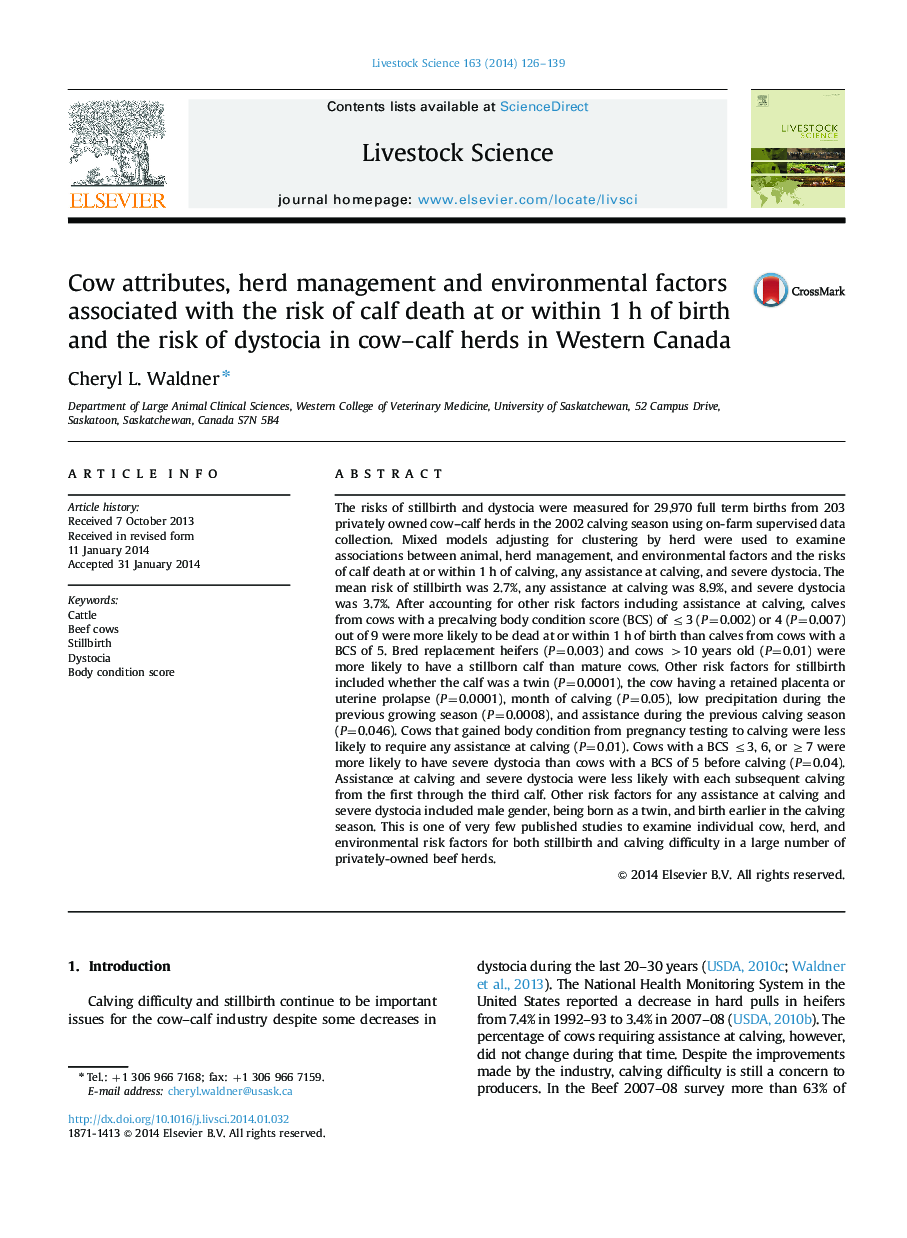| کد مقاله | کد نشریه | سال انتشار | مقاله انگلیسی | نسخه تمام متن |
|---|---|---|---|---|
| 2447221 | 1553969 | 2014 | 14 صفحه PDF | دانلود رایگان |
The risks of stillbirth and dystocia were measured for 29,970 full term births from 203 privately owned cow–calf herds in the 2002 calving season using on-farm supervised data collection. Mixed models adjusting for clustering by herd were used to examine associations between animal, herd management, and environmental factors and the risks of calf death at or within 1 h of calving, any assistance at calving, and severe dystocia. The mean risk of stillbirth was 2.7%, any assistance at calving was 8.9%, and severe dystocia was 3.7%. After accounting for other risk factors including assistance at calving, calves from cows with a precalving body condition score (BCS) of ≤3 (P=0.002) or 4 (P=0.007) out of 9 were more likely to be dead at or within 1 h of birth than calves from cows with a BCS of 5. Bred replacement heifers (P=0.003) and cows >10 years old (P=0.01) were more likely to have a stillborn calf than mature cows. Other risk factors for stillbirth included whether the calf was a twin (P=0.0001), the cow having a retained placenta or uterine prolapse (P=0.0001), month of calving (P=0.05), low precipitation during the previous growing season (P=0.0008), and assistance during the previous calving season (P=0.046). Cows that gained body condition from pregnancy testing to calving were less likely to require any assistance at calving (P=0.01). Cows with a BCS ≤3, 6, or ≥7 were more likely to have severe dystocia than cows with a BCS of 5 before calving (P=0.04). Assistance at calving and severe dystocia were less likely with each subsequent calving from the first through the third calf. Other risk factors for any assistance at calving and severe dystocia included male gender, being born as a twin, and birth earlier in the calving season. This is one of very few published studies to examine individual cow, herd, and environmental risk factors for both stillbirth and calving difficulty in a large number of privately-owned beef herds.
Journal: Livestock Science - Volume 163, May 2014, Pages 126–139
